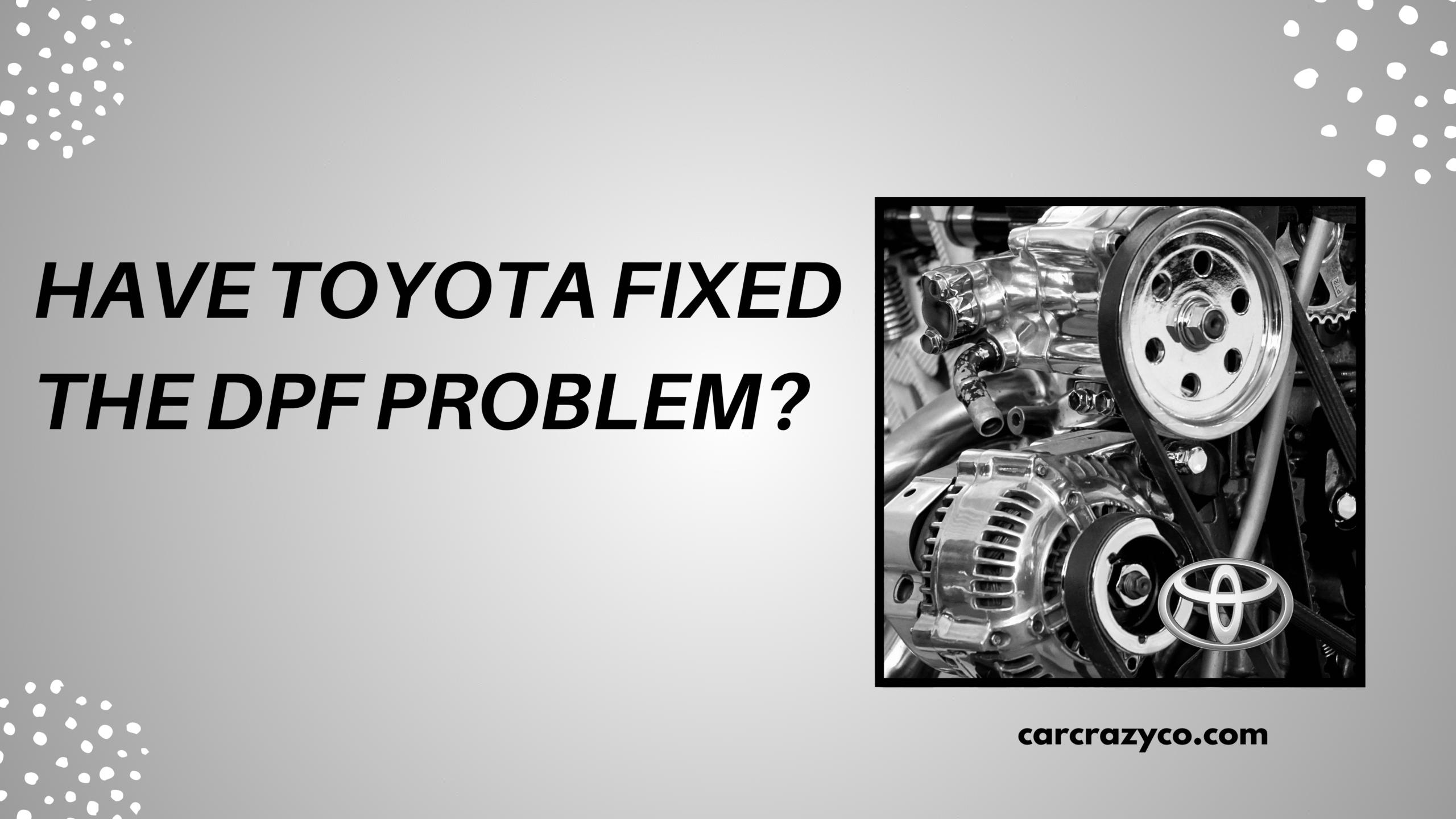Contents
- 1 Has Toyota Fixed the DPF Problem? – 5 Detailed Sections
- 2 Conclusion: Is the Toyota DPF Problem Truly Fixed?
- 3 FAQs
- 3.1 1. What causes the DPF problem in Toyota diesel vehicles?
- 3.2 2. Has Toyota made improvements to the DPF system?
- 3.3 3. Are all Toyota diesel models now free from DPF issues?
- 3.4 4. How can I prevent DPF problems in my Toyota diesel?
- 3.5 5. What happens if the DPF gets clogged?
- 3.6 6. Can I remove the DPF to avoid problems?
Introduction
The Diesel Particulate Filter (DPF) has been a critical component in reducing harmful emissions from diesel engines, but many Toyota owners have faced frustrating issues with it. The question remains—has Toyota effectively fixed the DPF problem that has caused headaches for drivers worldwide?
This topic matters deeply because the DPF affects engine performance, fuel efficiency, and maintenance costs. For anyone owning or considering a Toyota diesel vehicle, understanding the latest on DPF fixes is crucial for peace of mind.
In this blog, we will explore Toyota’s efforts to address DPF problems, what solutions have been introduced, and whether the issue is truly resolved for everyday drivers.
Has Toyota Fixed the DPF Problem? – 5 Detailed Sections
1. What is the DPF Problem in Toyota Diesel Vehicles?
The DPF traps soot and particles from the exhaust to reduce pollution but can become clogged over time. This leads to warning lights, reduced performance, and costly repairs if not cleaned or regenerated properly.
Toyota diesel owners have reported these symptoms especially during short trips or city driving, where regeneration cycles fail. Understanding this problem explains why many question Toyota’s solutions.
2. Toyota’s Original DPF Design and Its Limitations
Toyota’s early DPF systems worked well under ideal conditions but struggled in stop-and-go traffic. The filters require high-temperature regeneration to burn off soot, which doesn’t always happen on shorter journeys.

This limitation led to many customers experiencing DPF blockage and frequent service visits. Toyota initially faced criticism for the filter’s sensitivity and maintenance demands.
3. Improvements Toyota Has Made to the DPF System
In response, Toyota introduced software updates, improved engine management systems, and redesigned some components to enhance regeneration. Newer models feature better sensors and algorithms that monitor soot buildup more accurately.
Some Toyota diesel engines also received upgraded exhaust systems and improved fuel injection timing to reduce particulate production. These updates aimed to minimize DPF clogging and extend filter life.
4. Are the New Toyota Diesel Models Free From DPF Issues?
Recent Toyota diesel vehicles show significantly fewer DPF-related problems, thanks to improved technology and better engine tuning. Customer reports and expert reviews indicate enhanced reliability in urban and mixed driving conditions.
However, improper driving habits—like consistently short trips—can still cause issues even with newer models. Routine maintenance and following manufacturer guidelines remain essential.
5. Tips for Maintaining the Toyota DPF System
Toyota advises regular highway drives to allow proper DPF regeneration and warns against removing or tampering with the filter. Using quality fuel and keeping up with scheduled servicing also helps.
Drivers should watch for warning signs such as the DPF light and address them early. Proper care can prevent costly repairs and ensure the diesel engine runs efficiently.

Conclusion: Is the Toyota DPF Problem Truly Fixed?
Toyota has made significant strides in fixing the DPF problem with updated technology and better engine management, reducing previous reliability concerns. While many drivers experience fewer issues today, the system still requires proper care and driving habits.
Understanding how the DPF works and following maintenance guidelines helps ensure a smooth diesel experience. Toyota’s ongoing improvements show a commitment to cleaner emissions without sacrificing performance.
For diesel owners, the DPF issue is no longer as severe, but vigilance and proper maintenance remain key.
FAQs
1. What causes the DPF problem in Toyota diesel vehicles?
Clogging from soot buildup due to incomplete regeneration, often worsened by short trips.
2. Has Toyota made improvements to the DPF system?
Yes, with software updates, better sensors, and redesigned components in newer models.
3. Are all Toyota diesel models now free from DPF issues?
Most newer models have fewer problems, but proper maintenance is still essential.
4. How can I prevent DPF problems in my Toyota diesel?
Regular long drives, quality fuel, and timely servicing help maintain the DPF.
5. What happens if the DPF gets clogged?
It can cause warning lights, reduced power, and expensive repairs if ignored.
6. Can I remove the DPF to avoid problems?
Removing the DPF is illegal in many places and can cause more damage to the engine.








